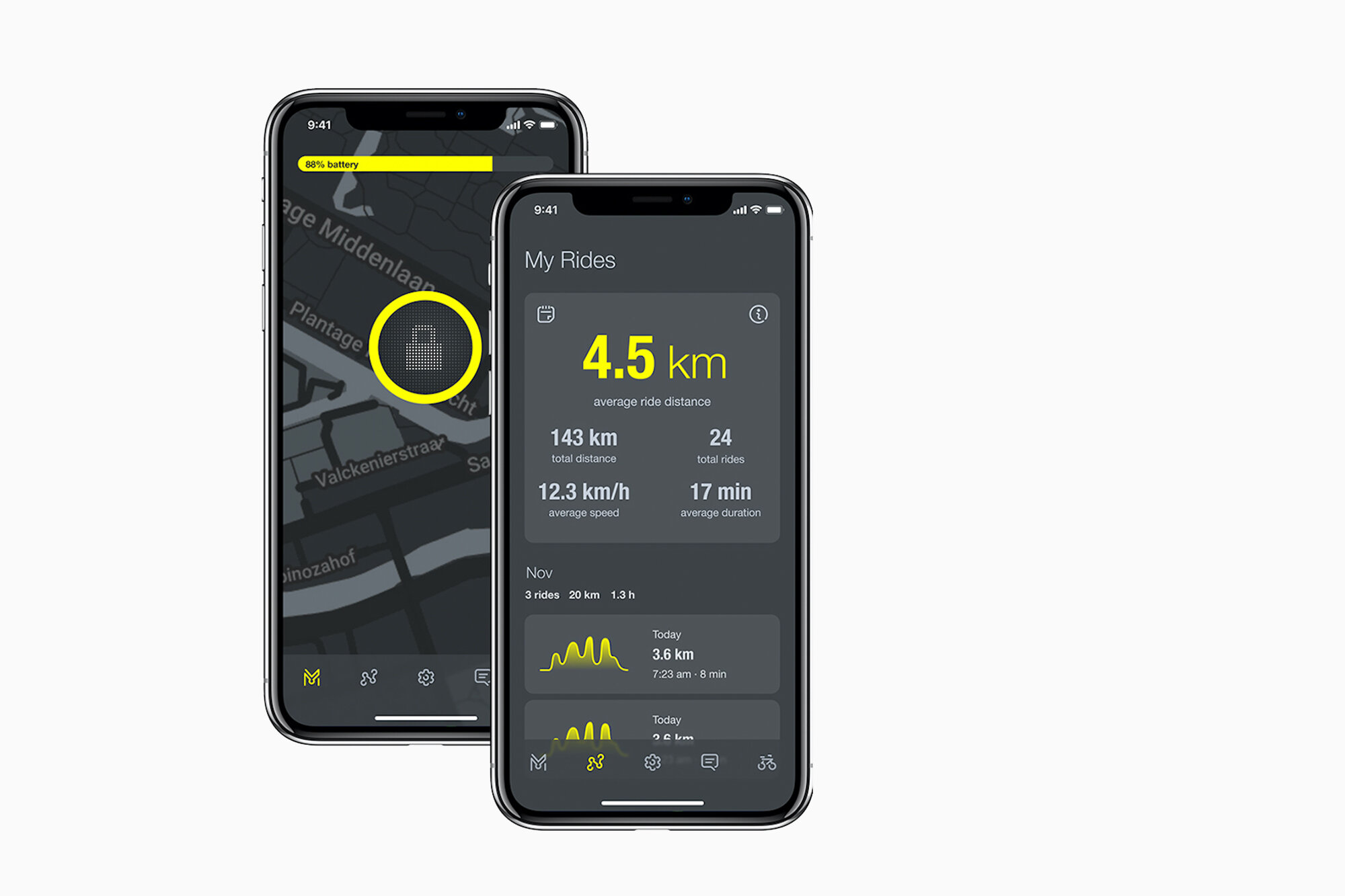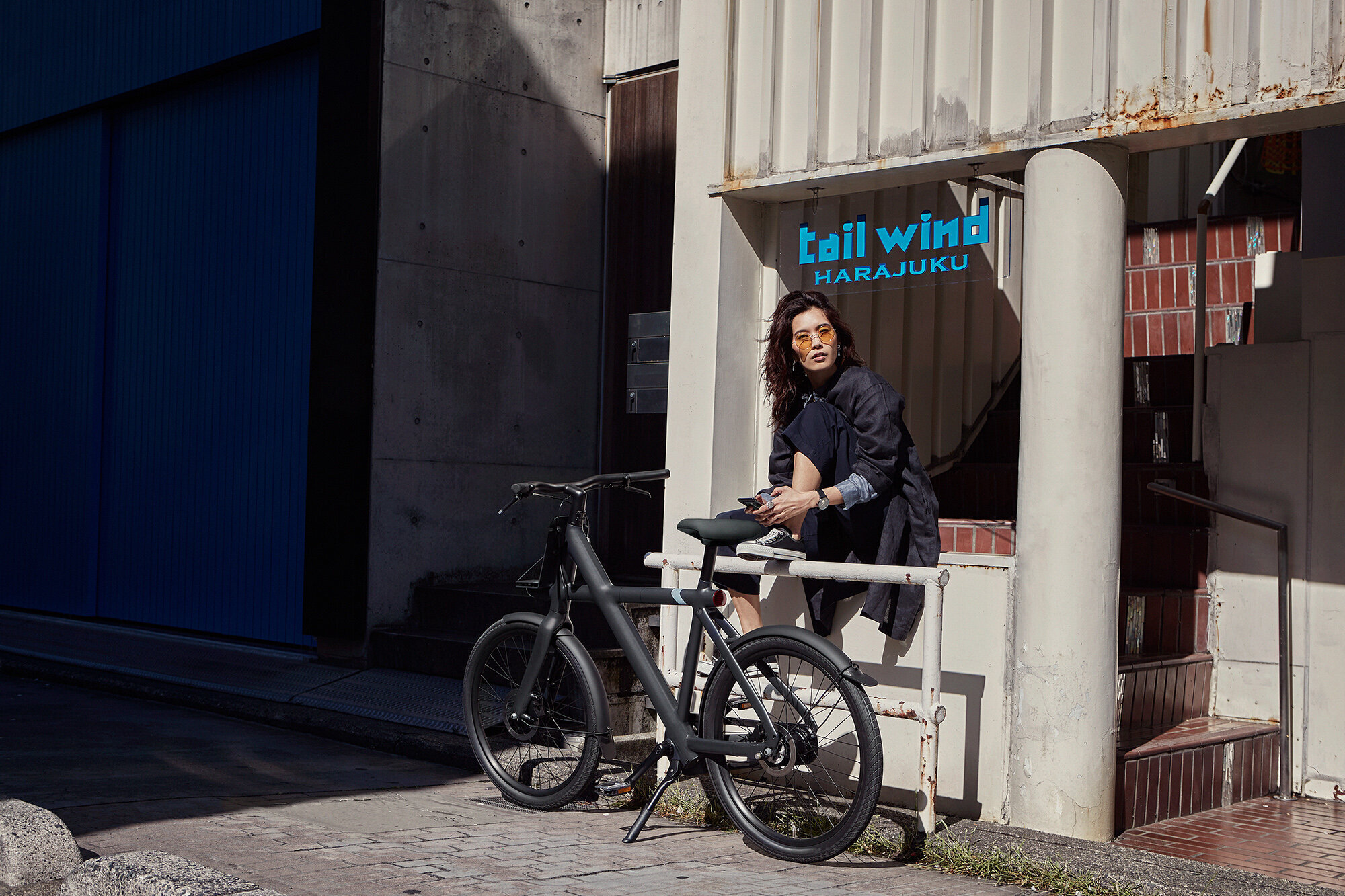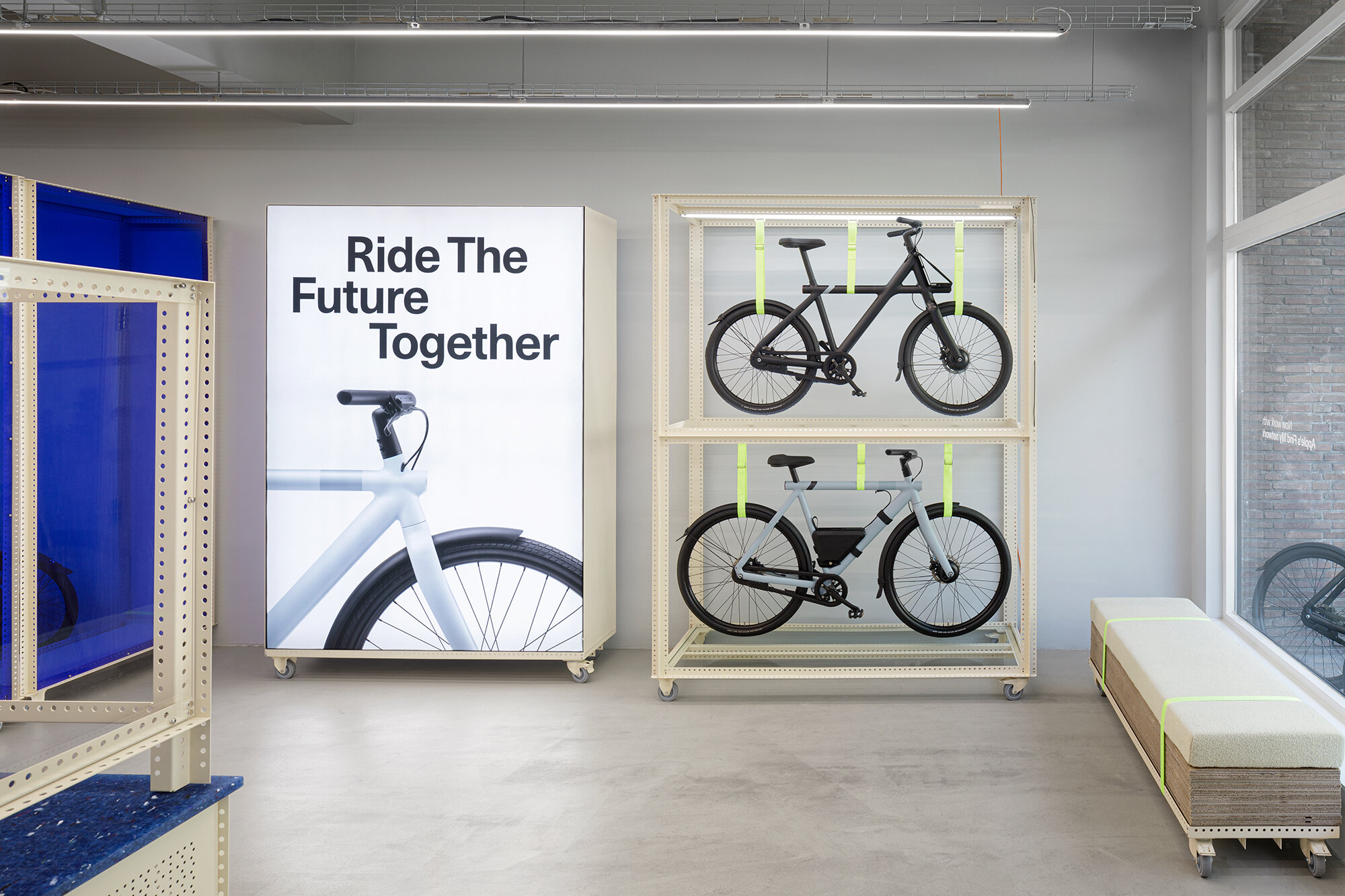'5+1' with Shannon E. Thomas – Head of Experience Design at VanMoof
Meet Shannon E. Thomas – Head of Experience Design at VanMoof in our interview series ‘5+1’.
Back in 2009, the Dutch Carlier brothers founded the brand VanMoof with the vision to offer the perfect city bike. Now 12 years later everyone is talking about the brand and its fast, smart and stylish e-bikes. Shannon joined VanMoof in July 2020 and is responsible for building and managing a team of experience designers, researchers, and UX writers. She is one of the women in a leadership position who places a great importance on absolute equality and promotion of women in the industry. Learn more about Shannon and her job, how UX will define the future of mobility, about Amsterdam being one of the most bike friendly cities, gender diversity at VanMoof and her opinion on how mobility will look like in 2030.
1. You are Head of Experience Design at VanMoof? What does your job involve and what is it that drives you?
It’s hard to sum up my job because it’s always changing. Over the past year, I’ve grown the experience design team from a single designer to a team of eight, while also adding new disciplines like content strategy, UX writing, and design technology. My number one responsibility is creating structure and opportunities for this amazing group to succeed, which means working with stakeholders across the organization to tie initiatives to the rider experience while designing solutions to ensure that we’re delivering the most value for our riders. Being in experience design means that we’re looking across the entire customer experience and trying to find opportunities to bring new features or new services to life.
The holistic experience of cycling and the bike is in essence what’s driving me everyday. I’ve spent the past eight years of my career working with connected products, and there’s something special about creating a digital experience that isn’t meant to be front and center. Our success isn’t measured by how long a rider engages with the app or how many clicks we get in a tool that we use to support our Bike Doctors. Success is ensuring that our riders have the best, safest and most convenient riding experience they can possibly have, and that we support the experience that they want to have as they zip through the city (or wherever they happen to be riding).
2. User experience (UX) has become more important than ever. How will UX define the future of mobility?
UX used to be synonymous with traditional software and app design. We’re moving away from that in a lot of ways, thinking less about how we can get users into the digital world, and more about how we can use digital interactions to facilitate or enhance real-world experiences. What UX does is that the experience of riding, from the very beginning to the very end is coordinated, consistent and the best it can possibly be. Safety and convenience are both huge factors in getting more people onto bikes and Apps can help us solve that, whether it’s providing riders with safer road recommendations or making sure they know when to wait 10 minutes to avoid a downpour.
At VanMoof, we’re always looking towards what’s next, which means we’re constantly considering new technologies and features for both the bike, the digital experience and the rider. With every new possibility, we ask ourselves, “How will this improve or change the experience of riding a bike?” This guides us to invest in solutions that make our existing riders more confident as well as opening up the world of bicycling to a whole new set of mobility-seekers and commuters.
In this way, UX is not only defining which technologies will become a part of our everyday lives and which will be forgotten, it’s also making new methods of mobility more accessible. As more people decide to take their bikes to work instead of cars, we’ll start to see more pressure on cities to prioritize these new modes of transportation. Whereas in the past, we saw car pressure lead to highways slicing through cities, we’ll hopefully see the opposite in the future – with sidewalks and bike paths bringing us closer together.


3. You live and work in Amsterdam. The number one means of transport is the bicycle. What can other cities learn from Amsterdam?
I live in Amsterdam now but am originally from the middle of the United States. My birthplace wasn’t a place where you would ride a bike after the age of 16 unless it was for sport, and even then cyclists face regular harassment and road rage. When discussing the topic of mobility with non-Amsterdammers, I often hear that Amsterdam is unique, and the way we do things here can’t possibly work in cities like St. Louis where I grew up.
While it’s true that Amsterdam is unique, it hasn’t always been the bicycling haven that it is today. In the 60’s and 70’s, Amsterdam became a car-dominated city like so many others. There were record numbers of traffic fatalities, many of them being children. Watching their city become car-first and human-second infuriated many Amsterdammers, who began reclaiming streets in protest. These protests eventually led politicians to establish new policies and infrastructure, leading to the Amsterdam we have today.
When other cities look at Amsterdam, I hope they’re inspired by all of the bike paths and children riding in bakfiets, but more importantly, I hope they see that our city’s infrastructure is the result of decisions that prioritize the safety of children and the happiness of citizens - not cars.


4. As we all know the mobility industry is still dominated by men. How does it look like in your team and in general at VanMoof? Where do you see the benefits and opportunities of more women working in the industry?
VanMoof is a company full of strong women that help shape everything from the bike itself to the service we offer to our riders. I do see that we’re still largely in predictable places – design, HR, and PR to name a few. It’s no surprise when looking at our R&D department, most of our engineers and developers are men, and I’m the only woman in leadership. We’re actively pushing to change this, and I’m proud to be a part of a team that continues to hold this as a priority, even as we face all of the typical challenges of shipping a physical product and scaling our team.
The Experience Design team at VanMoof skews more female than male as well as more diversity, and perhaps more importantly, we all have different backgrounds, especially when it comes to bicycles. VanMoof is on a mission to get the next billion on bikes. When such an ambition is the company goal, it’s important that the designers of that experience understand what it’s like to live and cycle in sprawling suburbs, cities with hills, or places where it’s generally not safe to ride a bike. With a diverse team, we can draw on each other’s experiences to make sure that we’re designing a safe and accessible experience for everyone.
5. Let’s talk about the future of mobility. How do you think will mobility look like in 2030?
2030 isn’t that far in the future, so I won’t make any wild predictions. What I do suspect is that people will commute less often and that fewer of those commutes will be done with cars. Cities will continue to invest in public transportation and infrastructure for walking and cycling. People will continue to telecommute, and when they do have to head into the office, they’ll insist on a journey that’s more pleasant than sitting in traffic. The sustainability aspect will also gain relevance in everyday decisions amongst the mainstream, with people actively choosing environmentally conscious options to reduce pollution, free cities from gridlock and ultimately making them greener, cleaner and community-centric.
I believe we’ll continue to see people moving toward more human-powered (or partially-human-powered) modes of transportation, especially as battery technology advances and charging infrastructure proliferates. With greater interest and adoption, I suspect we’ll start to see vehicles that are essentially bicycles, but that look a lot less like the bikes we all think of today. Like tandems or recumbent bicycles, we’ll see more form factors emerging that reduce or remove the barriers to cycling, such as weather or safety.
And the +1 question from Shannon to you:
Who are we leaving behind? When designing for the future of mobility, we often become obsessed with the next optimization that will make things safer, cheaper, faster, or more convenient. Innovation, however, is lopsided, so we can’t take for granted that optimizing for one group of people will benefit all. For example, self-driving cars allow for drivers to be distracted when in traffic, but algorithms that fail to recognize vulnerable roadway users end up leaving cyclists and pedestrians behind. Usually it’s more subtle – for example, a town in Sweden found that choosing to clear the roads of snow before the sidewalks prioritized the mobility of men over that of women, who were more likely to walk as well as drive. So as we optimize to make flights cheaper or cars safer or bicycles faster, we should continually be looking out for those unconsidered costs.
Asking ourselves not only who will benefit, but also who will be left behind by the decisions we make?
Thanks Shannon for the interview and the great insights.
Pictures: VanMoof
Interview: Britta Reineke


